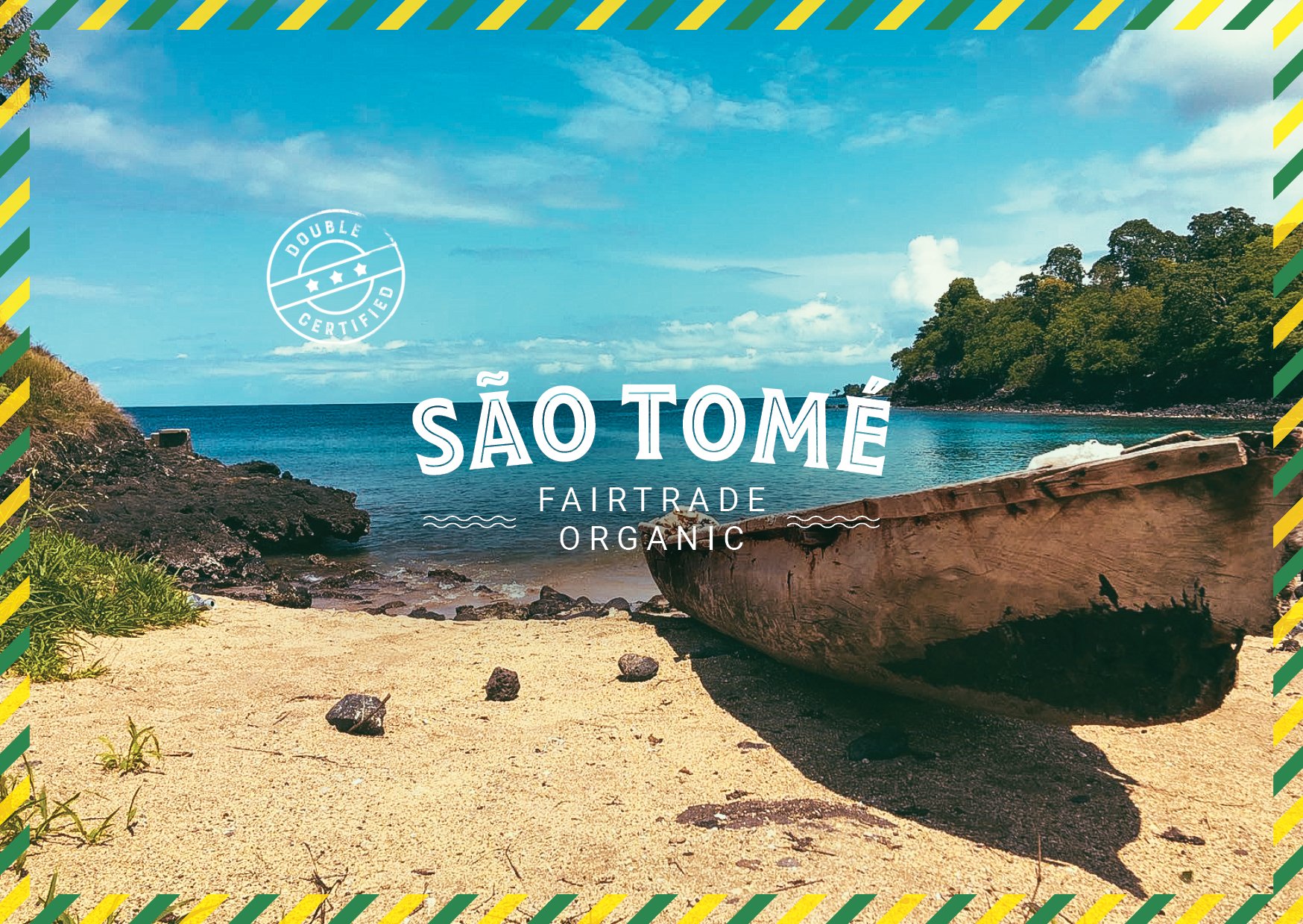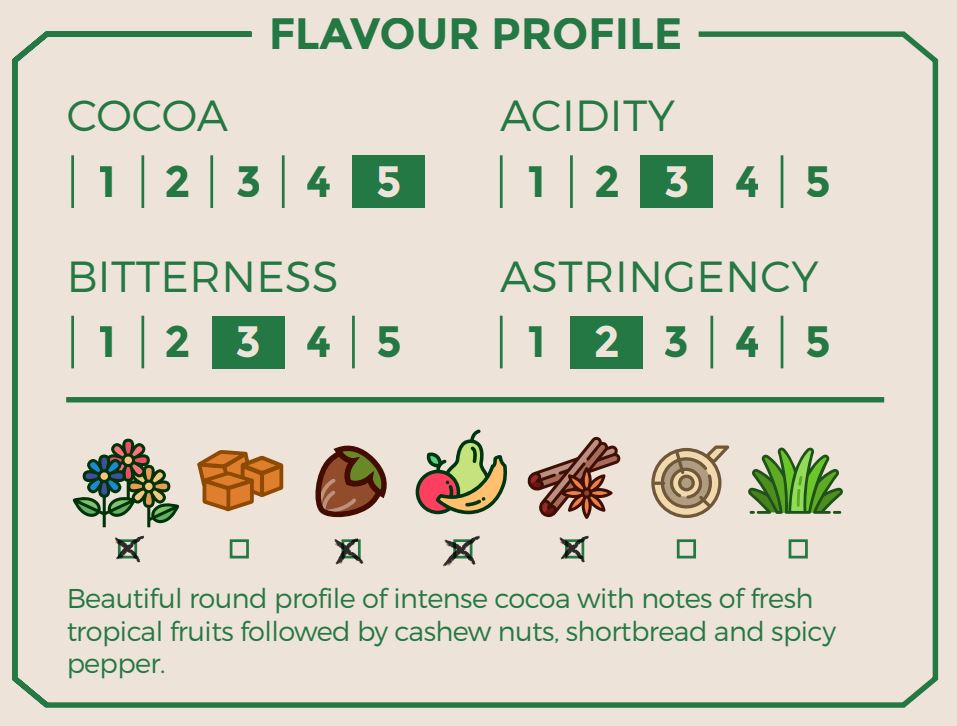São Tomé CECAQ 11 Organic + Fair Trade
Login to see the prices.
Product Details
Region and Country
Mestre António, São Tomé
Story
São Tomé, or Chocolate Island, once was the world’s biggest cocoa producer and an important source of cocoa in later years, claims a key role in the introduction of cocoa in West Africa from Latin America and facilitated the early growth of consumption in European mainland. The country has a complicated history, being a former slavery driven economy. This resulted in a heyday in cocoa production 100 years ago. Cacao was introduced to the tropical West African island of São Tomé around 1850 by Portuguese colonists after having successfully introduced Brazilian varieties to the neighbouring island of Príncipe about thirty years earlier. Given its unique location and rich history of cocoa, Daarnhouwer has held a strong connection with the island for many years, sourcing cocoa beans directly from farms and through small local buyers.
This cocoa is produced by CECAQ 11, a second level cooperative that brings together 11 cocoa producing communities in the south of São Tomé. At present, CECAQ accounts for 1135 members, of which 402 are women. São Tomé farmers plan to build on the successes that their co-operative model has bought. For example, using money raised from her work with the co-op, 49-year-old cocoa farmer Hortência Pina has been able to improve her crops: ‘My trees are getting old and I am able to replace them with new ones which we have grafted to create better hybrids that are more productive and start fruiting after only two years,’ she says. In recent years, members of CECAQ-11 have also put their Fair Trade premium toward other community-improvement initiatives, such as building a kindergarten.
Harvest
March – May (main harvest) – February (mid-crop)
Genetics
It is believed that the genetic stock of these two islands served as a basis for developing the West African Amelonado. In the mid twentieth century other varieties were introduced from Ecuador, Trinidad and Venezuela, which further enriched the varieties found on the islands.
Post Harvesting Process
The beans are fermented at farmer level. The coming years the cooperative plans to establish warehouses, dryers and fermentation centres and provide training and technical assistance to all its members to optimise quality and flavour.
Flavour
Beautiful round profile of intense cocoa with notes of fresh tropical fruits followed by cashew nuts, shortbread and spicy pepper.

